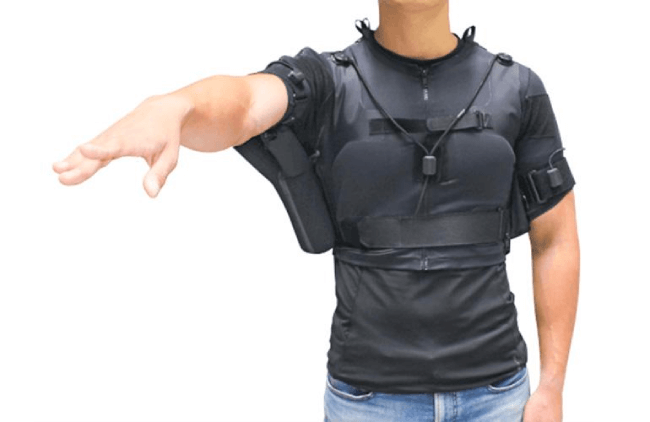Soft Robotics: The Future of Medical Treatment for ALS Patients
Insights | 24-02-2023 | By Robin Mitchell
Recently, soft robotics has emerged as a promising technology to help patients with neurodegenerative conditions such as ALS. Researchers have demonstrated the advantages of using soft robotics in medical aid by providing control and strength to motor actions. In this study, an exosuit with inflatable balloons and actuators was developed to enhance arm strength in ALS patients. This breakthrough could help ALS patients maintain their independence for longer and improve their quality of life. Moving forward, soft robotics has the potential to revolutionise medical aid by providing more personalised and adaptive solutions to individuals with various conditions. What is soft robotics, what did the researchers demonstrate, and how could soft robotics be used in the future?
What is soft robotics?
When we think about robotics, large mechanical machines made from metal springs come to mind, using large servo motors to control different arms and stiff, jerky movements between different positions. For the most part, this is an accurate image to conjure up as the vast majority of modern robotics do indeed use large servo motors moving to precise angular positions. Some robotics companies, such as Boston Dynamics, have demonstrated robotics capable of fluid motion, with four-legged robots dancing to music while bipedal robots throw tools across platforms and perform backflips.
However, a new area of robotics is starting to emerge called “soft robotics” and presents engineers with numerous advantages over traditional robotic technologies. As the name suggests, soft robotics are robotic systems built around soft technologies, reducing (or eliminating) the use of ridged parts. For example, a typical robotic arm may be manufactured from metal or plastics, but a soft robotic arm could be made from inflatable rubber or plastic sheet, with pumped air providing the lifting force.
Currently, research into soft robotics is still in its infancy due to the relatively new idea behind them. Some researchers have explored their use in navigating around tight spaces, as an inflated plastic shape can easily deform and wrap around sharp objects while carrying surveillance equipment such as cameras and microphones. This could be beneficial for infrastructure maintenance as well as search and rescue operations, but as such robotic devices are still in their early days, they continue to be confined to laboratory conditions.
Researchers demonstrate soft robotics in ALS patients
Recognising the advantages of soft robotics, researchers from Harvard John A. Paulson School of Engineering and Applied Sciences (SEAS) and Massachusetts General Hospital (MGH) have recently developed a wearable robotic system to help patients suffering from ALS regain motor control. Amyotrophic lateral sclerosis (ALS), also known as Lou Gehrig’sGehrig’s disease, is a neurodegenerative condition that attacks nerves responsible for motor control, making it increasingly difficult to move (eventually leading to paralysis).
To help patients with these motor controls, it’sit’s technically possible to build an exosuit that detects intended motion and applies mechanical force that stabilises arms and legs. However, such devices are extremely heavy, loud, and potentially dangerous, as trapped body parts can be crushed by powerful motors. Instead, the researchers turned their attention to soft robotics, whereby inflatable balloon actuators placed under the arms can provide additional support and stability. The soft nature of the actuators prevents damage from crushing or squeezing, and the limited mobility of the actuators prevents ligaments from being bent far beyond their capabilities.

Credit: Walsh Lab, Harvard SEAS
The new system is first calibrated to individual patients over a period of 30 seconds, and after 15 minutes of training, patients were able to demonstrate significant improvement in their ability to pick up objects and place them into a bin. In addition, the system is able to identify intended motion while ignoring rapid, uncontrollable motion to move the actuator to exactly where it is needed.
However, the current system is only able to work with ALS patients in the early stages, where motor controls are still present, but later stages of ALS result in complete paralysis. As such, the researchers are exploring the use of brain signals to control soft robotic actuators, thereby potentially providing motion to those who are paralysed.
How could soft robotics be used in the future?
What the researchers demonstrated is just the tip of the iceberg that soft robotics has to offer. The ability to restore motion in those who have limited control helps to bring independence to millions around the world, and not only does this help to ease medical resources, but it also reduces the impact of neurodegenerative conditions.
But the field of soft robotics presents engineers with far more opportunities. Exosuits powered by soft robotics could help individuals carry more weight, perform rigorous work for longer hours, and increase performance in high-risk scenarios. For example, firefighters fitted with exosuits could be given immense amounts of strength to carry people from burning buildings, shift heavy debris from collapsed buildings, and even move vehicles single handily to get to those trapped inside or underneath.
Overall, what the researchers have demonstrated here is truly exciting and, hopefully, the first step in fighting against diseases that impact so many lives.

